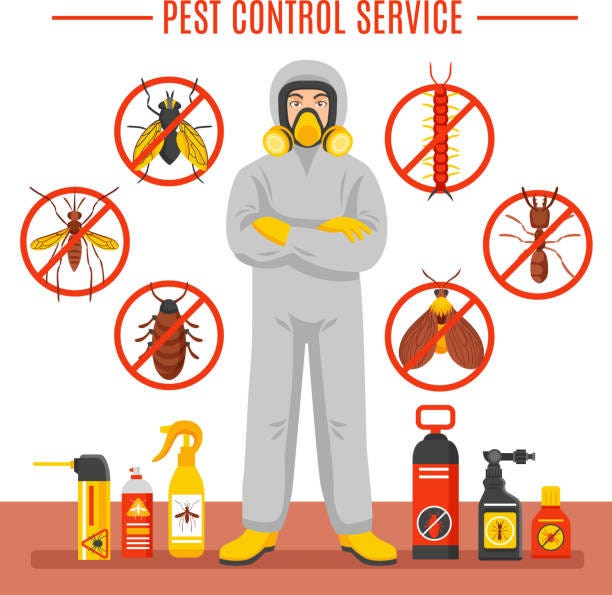Professional A1 Charlotte Bed Bug Exterminator - Quality Service Guaranteed
Professional A1 Charlotte Bed Bug Exterminator - Quality Service Guaranteed
Blog Article
Bed Bug Treatment Malfunction: Comparing Chemical Vs. Non-Chemical Solutions
In the world of insect control, specifically when taking care of the consistent issue of bed bugs, the choice between chemical and non-chemical treatment remedies can be an essential one. Both strategies offer unique benefits and disadvantages, influencing variables such as efficiency, security factors to consider, and total price. By checking out the nuanced information of each technique, a clearer understanding of which path to seek in attending to a bed bug invasion can be obtained.
Efficiency of Chemical Treatments
Chemical treatments for bed insect invasions have actually been extensively recognized for their potent and fast effectiveness in getting rid of these pests. When thinking about the efficiency of chemical treatments, it is crucial to comprehend that they can supply a thorough and fast remedy to a bed pest trouble. Specialist pest control experts often depend on insecticides to target bed bugs at different phases of their life process, including eggs, fairies, and grownups. These chemicals typically work by disrupting the bed pests' nerves, leading to paralysis and ultimate fatality.
Furthermore, chemical therapies have the advantage of supplying recurring impacts, suggesting that they can proceed to remove bed bugs also after the initial application. This residual activity is especially helpful in combating any potential re-infestations. Furthermore, the rapid action of chemical therapies can bring relief to people facing extreme bed insect problems, enabling them to regain control of their living rooms swiftly.
Security Worry About Chemical Solutions
One important element that needs careful consideration when utilizing chemical remedies for bed pest treatment is making certain the safety of passengers and the setting. Exposure to particular chemicals used in bed pest treatments can lead to respiratory system issues, skin inflammation, or other unfavorable responses, especially in people with pre-existing conditions or sensitivities.
Furthermore, the environmental impact of chemical services is one more considerable consideration. Some pesticides utilized in bed insect therapies might be damaging to helpful bugs, wild animals, and communities if they leach right into the soil or water systems. It is important to utilize chemical therapies judiciously, following safety guidelines, and considering much less poisonous options to mitigate these dangers and make sure the efficient and secure administration of bed bug problems.
Advantages of Non-Chemical Approaches
Taking into consideration the possible safety worries and ecological effect associated with chemical solutions for bed insect treatment, discovering non-chemical approaches presents an appealing option with several distinct advantages. Non-chemical treatments are environmentally friendly, as they do not contribute to air or water pollution, making them a lasting choice for bug control.
Furthermore, non-chemical remedies can be effective in targeting bed bugs, including hard-to-reach locations where chemical therapies might not penetrate - A1 bed bug exterminator charlotte. Methods such as warm treatment, vacuuming, steam cleansing, and mattress coverings provide extensive obliteration without the usage of dangerous chemicals.
Limitations of Non-Chemical Treatments

In addition, non-chemical therapies often require numerous applications to achieve successful obliteration. This can be time-consuming and might not always ensure total elimination of all bed bugs and their eggs, especially in hidden or hard-to-reach locations.
Moreover, the success of non-chemical treatments greatly relies upon correct application and thoroughness, which can be testing for individuals without professional experience. Inadequate application of non-chemical techniques might result in insufficient removal, causing relentless infestations and the demand for additional treatments.
As a result, while non-chemical therapies have their benefits, it is essential to recognize these constraints and consider them when identifying one of the most effective technique for managing bed bug problems.
Expense Comparison: Chemical Vs. Non-Chemical Options
Given the constraints connected with non-chemical treatments, a click here to read crucial facet to review in the context of bed pest monitoring is the price comparison between chemical and non-chemical alternatives. Chemical treatments commonly include the application of insecticides by professionals, which can vary from $250 to $900 per room, relying on the severity of the problem and the dimension of the area to be treated. In comparison, non-chemical therapies like heat therapy or vapor can be much more costly, with costs varying from $1,000 to $6,000 for an entire home. While the first price of chemical treatments might appear reduced, multiple therapies might be called for to completely eradicate the problem, possibly increasing the overall expense. On the other hand, non-chemical choices might provide a much more eco-friendly and sustainable service, although they can be cost-prohibitive for some people. Eventually, when thinking about the expense of bed insect treatment alternatives, it is very important to evaluate the ahead of time expenses versus the efficiency and long-term sustainability of the chosen technique.
Final Thought

Thinking about the potential security problems and environmental influence associated with chemical remedies for bed insect treatment, discovering non-chemical approaches offers an encouraging alternative with several distinctive advantages.Given the constraints associated with non-chemical treatments, an important element to review in the Discover More context of bed bug administration is the price contrast in between chemical and non-chemical options. In contrast, non-chemical treatments like warmth treatment or heavy steam can be more pricey, with prices ranging from $1,000 to $6,000 for a whole home. While the first cost of chemical treatments might appear reduced, numerous treatments may be required to completely eradicate the invasion, possibly enhancing the general expense.In verdict, when contrasting chemical and non-chemical bed pest treatment options, it is crucial to consider effectiveness, security, benefits, restrictions, and expense.
Report this page